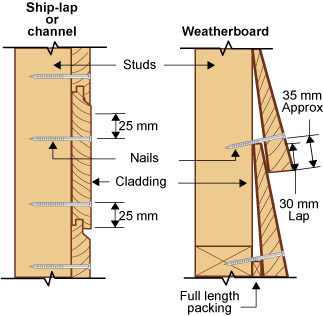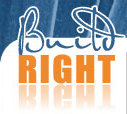Installation - Nailing
Note: Cladding should be kept dry and clean before installation.
When machined profiles are produced from seasoned timber the design of the edge-joint will allow for movement. Such movement is due to seasonal changes in equilibrium moisture content. (Equilibrium moisture content is the percentage of water content in a solid material.)
Good quality of work is sufficient to compensate for slight expansion and contraction in use. Nails should be placed so that movement of boards caused by changes in moisture content does not create sufficient stress to cause timbers to split. Individual boards must not be nailed together at the lap.

